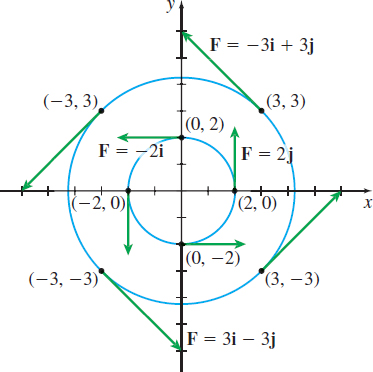EXAMPLE 1Describing a Vector Field in the Plane
Describe the vector field F=F(x,y)=−yi+xj by drawing some of the vectors F.
Solution We begin by making a table of vectors. We do this by choosing points (x,y) and finding the values of F.
| (x,y) | (2,0) | (0,2) | (−2,0) | (0,−2) | (3,3) | (−3,3) | (−3,−3) | (3,−3) |
|---|---|---|---|---|---|---|---|---|
| F(x,y) | 2j | −2i | −2j | 2i | −3i+3j | −3i−3j | 3i−3j | 3i+3j |
Figure 3 illustrates the vectors from the table. Notice that each vector in the field is tangent to a circle centered at the origin, and the direction of the vectors indicates that the field is rotating counterclockwise. This field might represent the motion of a wheel spinning on an axle, with each vector equal to the velocity at a point of the wheel.
